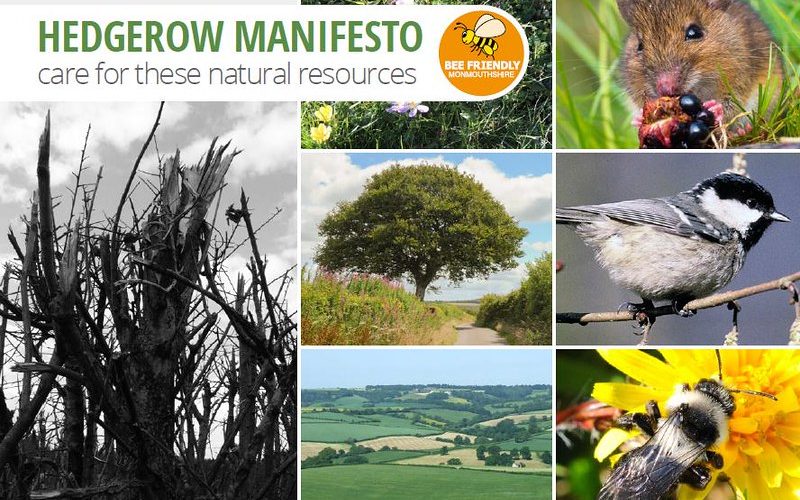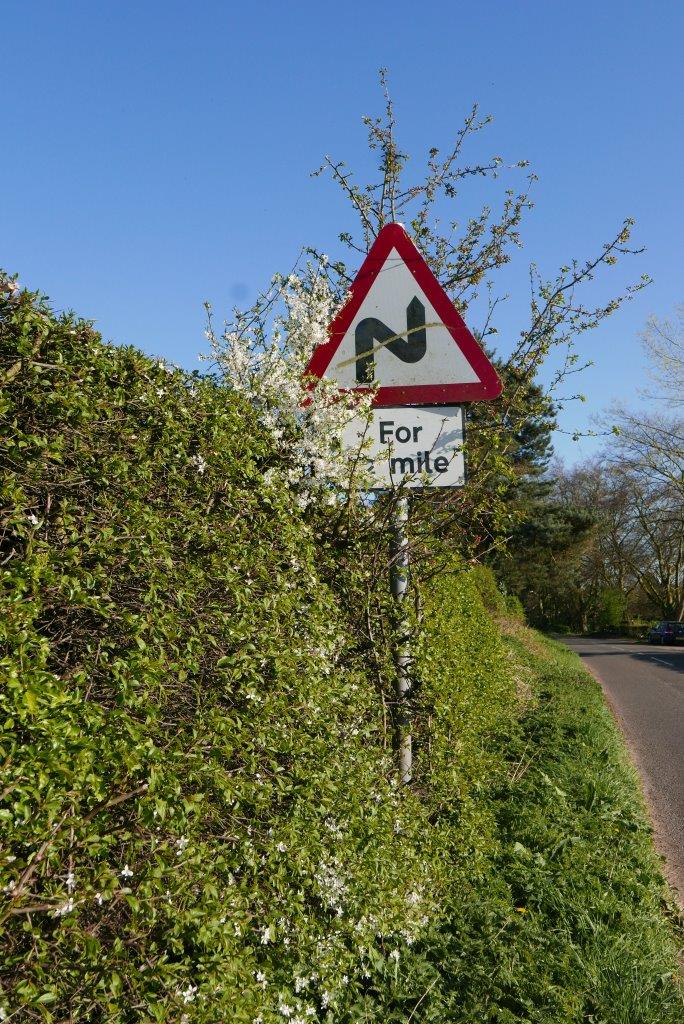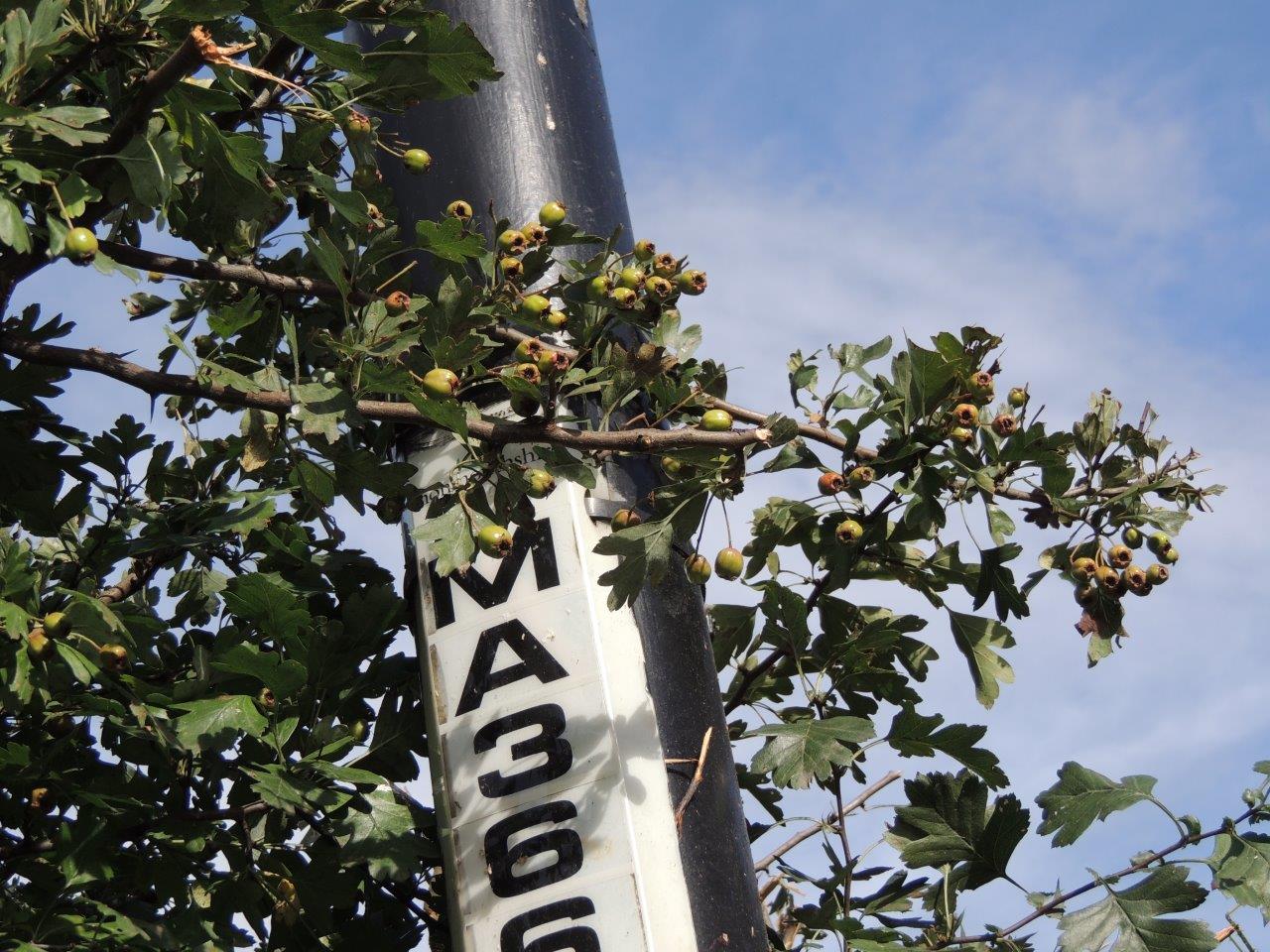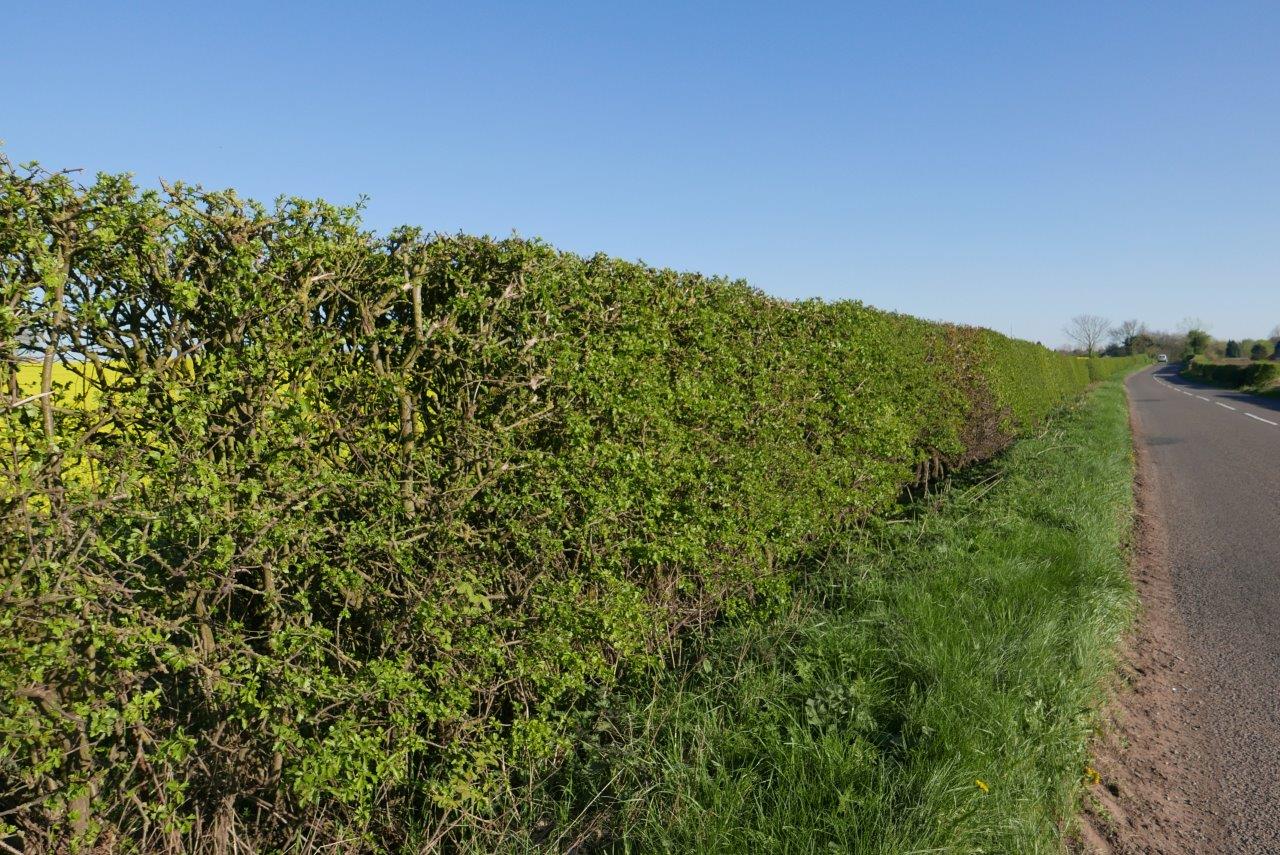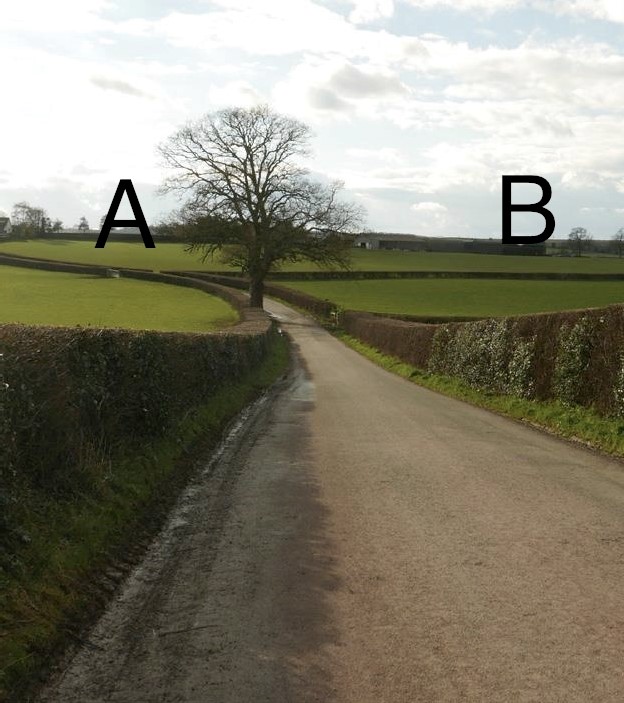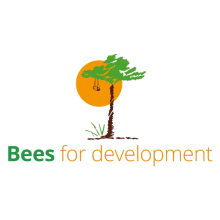Hedgerows need to flower
Listening to a Gardener’s Question Time programme recently, I heard a lady ask the experts why her shrubs are not flowering as expected: “I prune them every winter” she added. The experts explained to her the reason for non-flowering – she is diligently pruning off the stems containing all the developing buds of her much anticipated flowers.
And so it is with hundreds of miles of spirit-level trimmed hedgerow that remain no more than tidy green corridors, prevented from flowering by annual trimming. Most hedgerow trees flower in spring, on stems that were formed in the previous season, so for example, a hawthorn that is trimmed in winter cannot flower in spring. Once you begin to notice, you will commonly see fugitive scraps of hawthorn flowering beside road signs and other roadside fixtures where the flail cannot reach, and in solitude bearing their flowers and fruit beside their protective road sign (see below).
Stems of hawthorn which escape the flail, bear flowers and fruit in solitude beside their shielding road sign
Green is good, but flowering is what plants need to do, to use their energy and nutrients to create flowers, which attract and feed pollinating insects. The pollination that insects bring about generates the abundance of fruits and seeds that feed many more species throughout the year ahead. And of course, the insects themselves are food for birds and other species further along the food chain. Cutting off all of a hedgerows’ flowering stems is more intrusive than just reducing the size of a hedge; it is reducing also the future biodiversity value of the hedgerow.
Tidy green corridors – we need to allow hedgerows to grow tall, to flower and bear fruit
People of middle-age or older will remember car journeys in summer – when regular stops were necessary to clean insects from windscreens and headlights. It’s not necessary anymore because we no longer have those huge populations of insects. Those teeming insects fed upon huge populations of flowers, pollinated them to trigger abundant fruit and seed production, and were fed upon in turn. At this time of year, the air was a living larder laden with insects, feeding birds and bats. Our society and various policies have grasped that biodiversity is good. However, we must maintain bio-abundance too.
Hedgerows provide food, shelter and breeding sites for insect pollinators like bees, and are home for valuable insect predator species too. And not just invertebrates; hedgerows are supporting 80% of woodland birds and 50% of mammals too. A hedgerow that is allowed to flower is of far greater value to all of them than one that is repeatedly trimmed so that it never flowers.
As natural habitat is reduced, hedgerows are gaining in critical importance as remnants of wild habitat, and accordingly we need to upgrade our respect and care for them. For this reason, we are this week launching our Hedgerow Manifesto,1 calling for greater awareness and care for hedgerows, and allowing them to flower profusely as nature intends.
Best practice for hedgerows
We recommend best practice; instead of cutting hedgerows every year, we propose a three-year regime, with hedgerows on each side of a road never cut in the same year. This will allow hedgerow trees to flower in two years out of three, and maintain all the populations of species – plants, invertebrates, birds, amphibia, bats and other small mammals – that are progressively dependent upon hedgerows as increasingly precious corridors for wildlife. And hedgerows should not be less than two metres in height: study has shown that numbers of birds, and numbers of species of birds living in hedgerows increases directly with their height.2 Our aim must be to gain most from these precious remnant corridors, by letting them grow taller, and letting them flower.
Best practice for hedgerows
| Year 1 | Trim side A | Side B allowed to flower |
| Year 2 | Trim side B | Side A allowed to flower |
| Year 3 | No trimming | Both sides A & B flower |
| Year 4 | As Year 1 |
Dr Nicola Bradbear is Director of Bees for Development, an international charity based in Monmouth.
Learn more:
You can explore various Bees for Development resources on Agricology that focus on the interrelationship between pollinating insects and flowering plants and actions you can take to encourage wild flower diversity and provide forage for bees and other insect pollinators:
- The importance of bees and other insect pollinators
- Land management to support bees and other insect pollinators
- Plants that are valuable for bees and other insect pollinators
- Beekeeping and sustainability
- Proposed Hedgerow Manifesto for Monmouthshire
We also have many useful resources on Agricology that can help you with hedgerow management, such as:
- Illustrated guide to hedgerow network restoration
- Hedgerows and Hedgerow Trees
- Increasing the value of hedges for wildlife with relaxed cutting regimes
- Rejuvenation of hedgerows
- Managing hedges to benefit pollinators
- Hedgerow Biodiversity Protocol 2015 User Guide
(Editor’s Note)
1 Bradbear, N, Barlow, M and Tyler, S, (2017) Hedgerow Manifesto Bee Friendly Monmouthshire
2 Newton, I., (2017) British Birds 110, pp 77-91
Header image: Bee Friendly Monmouthshire’s Hedgerow Manifesto. All photo credits: Bees for Development
